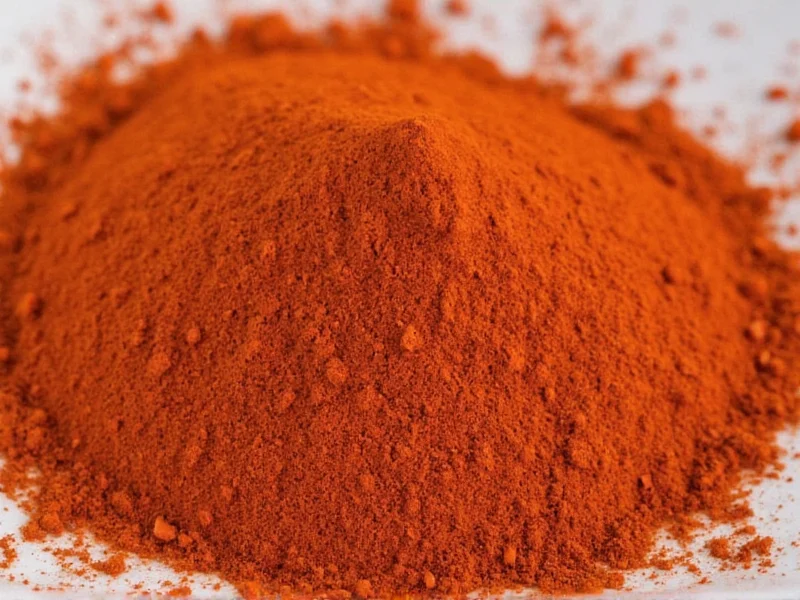Understanding the distinction between these two common kitchen staples is essential for achieving the right flavor and heat in your cooking. While both deliver that characteristic red pepper kick, they serve different culinary purposes and shouldn't be used interchangeably without adjustments.
What Exactly Is Chili Powder?
Chili powder isn't a single ingredient but rather a carefully balanced spice blend that varies by region and manufacturer. The base typically consists of dried, ground chilies (often ancho, pasilla, or New Mexico peppers), but authentic chili powder formulations include additional spices that create a complex flavor profile.
Traditional Mexican chili powder might contain only ground chilies, but American-style chili powder—what most grocery stores sell as simply "chili powder"—usually includes:
- Ground mild to medium-heat chilies (about 60-70% of the blend)
- Cumin (adds earthy warmth)
- Garlic powder (provides savory depth)
- Onion powder (adds sweetness)
- Oregano (contributes herbal notes)
- Salt (in some commercial blends)
This blend creates a versatile seasoning with moderate heat and rich, complex flavors that form the foundation of many Tex-Mex and Southwestern dishes. The heat level typically ranges from mild to medium, making it approachable for most palates.
What Exactly Is Cayenne Pepper?
Cayenne pepper refers to a single ingredient: finely ground dried cayenne peppers. These slender, pointed red peppers belong to the Capsicum annuum species and deliver consistent, significant heat. Unlike chili powder, cayenne contains no additional spices or flavorings—it's pure heat.
When you use cayenne, you're getting:
- 100% ground cayenne peppers
- Intense, straightforward heat (30,000-50,000 Scoville Heat Units)
- Minimal flavor complexity beyond the sharp, clean burn of the pepper
- Immediate heat impact with little to no delayed burn
Cayenne's heat is significantly more intense than standard chili powder—roughly 10-20 times hotter. This makes it ideal when you want pure heat without additional flavors interfering with your dish's profile.
Key Differences at a Glance
| Characteristic | Chili Powder | Cayenne Pepper |
|---|---|---|
| Composition | Spice blend (multiple ingredients) | Single ingredient (ground cayenne peppers) |
| Heat Level | Mild to medium (500-2,500 SHU) | Very hot (30,000-50,000 SHU) |
| Flavor Profile | Complex: earthy, smoky, with notes of cumin and garlic | Straightforward: sharp, clean heat with minimal complexity |
| Primary Use | Base seasoning for chili, tacos, fajitas, and rubs | Adding pure heat to dishes without flavor alteration |
| Substitution Ratio | N/A | Use 1/4 to 1/2 teaspoon cayenne per tablespoon of chili powder |
When to Use Each Spice
Understanding when to use chili powder instead of cayenne can transform your cooking:
Best Uses for Chili Powder
- As the foundational seasoning in chili con carne
- In taco seasoning blends and fajita mixes
- For seasoning meat rubs where complex flavor is desired
- In bean dishes and stews requiring depth of flavor
- When you want moderate heat with complementary spices
Best Uses for Cayenne
- When you need to add significant heat without altering flavor profile
- In Cajun and Creole cooking for authentic heat
- As a finishing spice to adjust heat level at the end of cooking
- In recipes specifically calling for cayenne's distinctive heat
- When making hot sauces that require pure pepper heat
Substitution Guide: Can I Substitute Chili Powder for Cayenne?
The question of can I substitute chili powder for cayenne requires careful consideration. While possible in some situations, substitutions need adjustment:
- Chili powder as cayenne substitute: Use 2-3 tablespoons of chili powder for every 1/4 teaspoon of cayenne. Be aware this will add additional flavors beyond heat.
- Cayenne as chili powder substitute: Use 1/4 to 1/2 teaspoon cayenne for every tablespoon of chili powder, plus add 1/2 teaspoon cumin and 1/4 teaspoon garlic powder to approximate the flavor profile.
For authentic mexican chili powder vs cayenne applications, note that traditional Mexican cooking often uses pure ground chilies (like ancho or guajillo) rather than the American spice blend. If substituting in authentic Mexican recipes, consider using the specific ground chili called for rather than standard chili powder.
Common Misconceptions Clarified
Many home cooks wonder is cayenne the same as chili powder—the answer is definitively no. This confusion often stems from:
- Both appearing as red powders in the spice aisle
- Some regional variations where "chili powder" refers to pure ground chilies
- Similar packaging and labeling in grocery stores
Another frequent question is about chili powder ingredients list variations. Commercial chili powders differ significantly between brands, with some containing primarily chilies and others loaded with additional spices. Always check the ingredients if you're sensitive to specific components.
Practical Tips for Cooking Success
To maximize your understanding of the difference between chili powder and cayenne pepper, consider these professional tips:
- Taste before using: Sample a tiny amount of each to understand their specific heat and flavor profiles.
- Add gradually: Especially with cayenne, add in small increments and taste as you go—its heat builds quickly.
- Consider timing: Add chili powder early in cooking to develop its complex flavors, but add cayenne later to preserve its sharper heat.
- Store properly: Keep both in airtight containers away from light and heat to maintain potency for up to 6 months.
- Make your own: Create custom blends by adjusting the ratio of ground chilies to other spices to match your preferred heat level and flavor profile.











 浙公网安备
33010002000092号
浙公网安备
33010002000092号 浙B2-20120091-4
浙B2-20120091-4